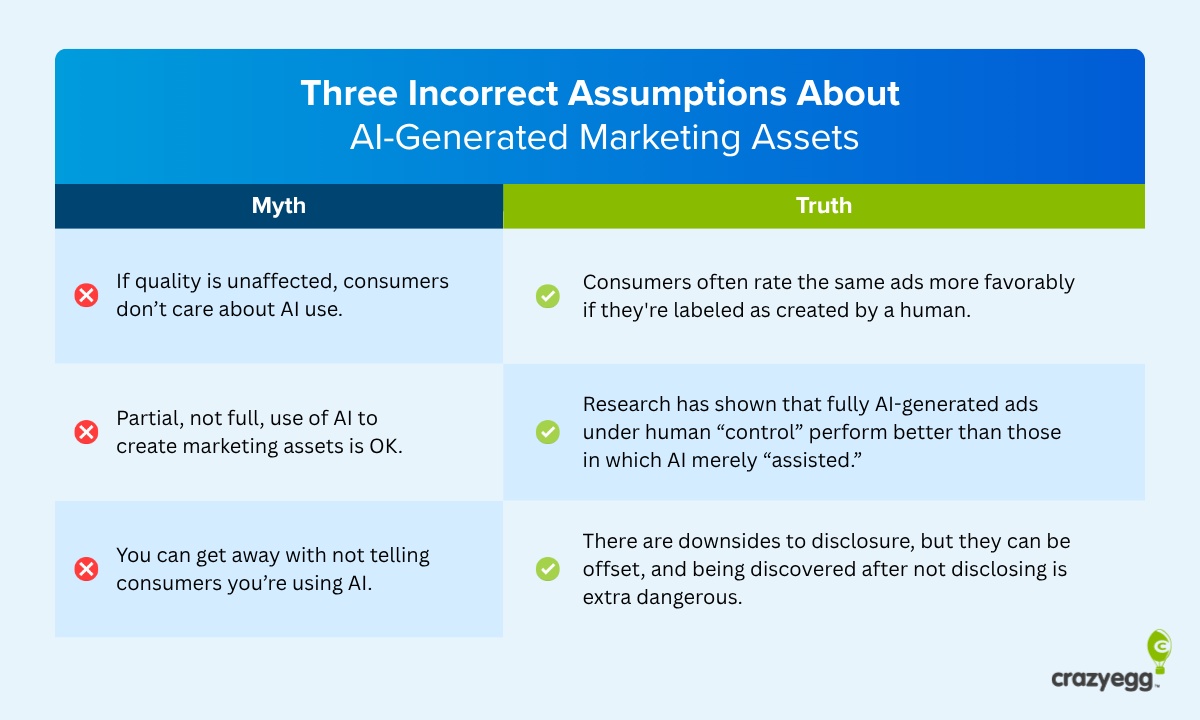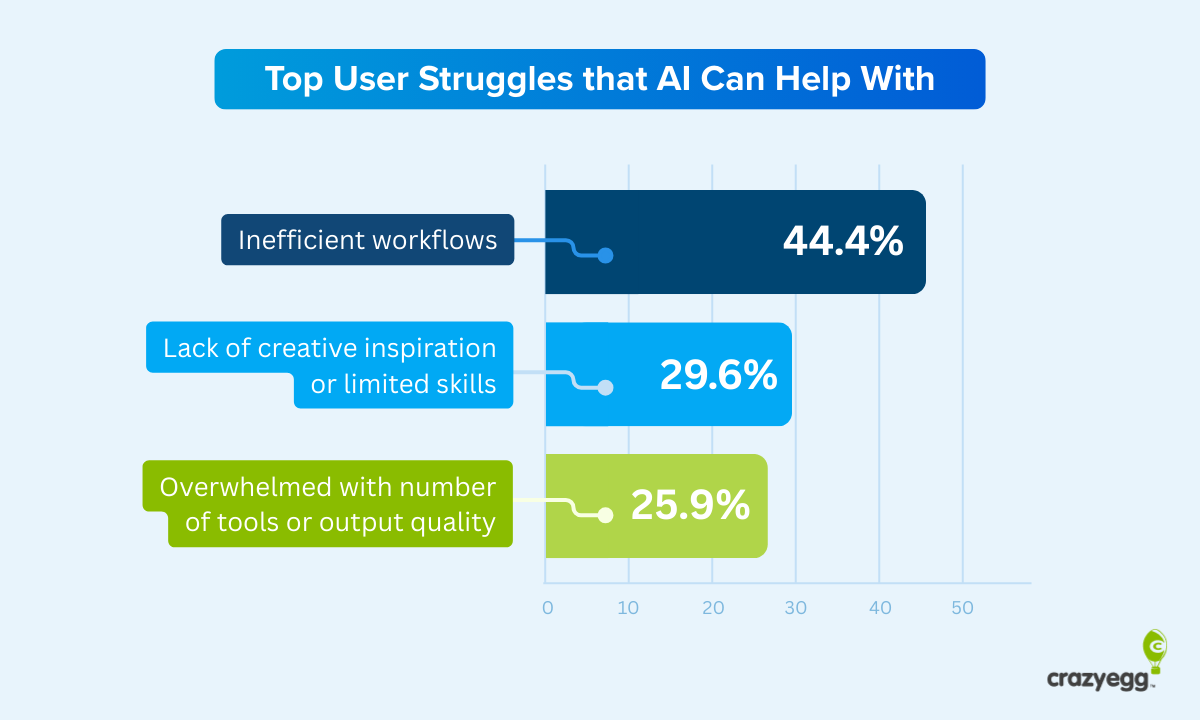What happens when a marketing campaign can’t be measured?
Do you go about business as usual, cranking out campaigns willy-nilly? Do you sidestep questions about metrics, mumbling something about ROI under your breath?
A few years ago, we struggled with new marketing channels that were virtually impossible to measure. Today, things are different. Let’s look at 5 ways you can measure marketing ROI—even those hard-to-measure marketing campaigns.
What You Can’t Measure on a Company Dashboard
You can’t split test your social media marketing strategy. You can’t run a controlled experiment to see whether your SEO strategy is really responsible for that growth in traffic.
It’s hard to justify your efforts when your results can’t be measured directly.
Hard, but not impossible.
Estimates and correlations might not count as proof of ROI, but when you tie your strategy to numbers, your actions become harder to ignore. What was once an unexplained fluctuation in revenue is now tied to your actions behind the scenes.
Just as importantly, these estimates and models start to tell you which elements of your strategy are most effective, and which elements should either be improved upon or let go.
So, how do you measure the impossible?
Focus on these five criteria, and you’ll know exactly what’s working and what isn’t.
1. Keeping it Simple: Money in, Money Out
Before we dive into this a bit more, I’d like to stress this point. No matter what methods you’re using to estimate value, you want to keep the surface level explanation as simple as possible. Fundamentally, you’re really trying to understand just three things:
- A clear definition of the strategy in question, so that it can be repeated.
- The financial cost of putting the strategy in place.
- The financial gain as a result of the strategy.
I know this sounds incredibly obvious, and it certainly should be, but these things have a tendency to get bogged down in details. No matter how many metrics end up playing a part in your model, you can’t lose sight of the big picture. This is about defining a repeatable strategy and measuring its financial value.
Nothing more, nothing less.
2. Defining a Strategy
If measurement has only one benefit, it’s this. You can’t measure the impact of a strategy without clearly defining what it is. I’m not arguing that you need to micromanage every aspect of your campaign. I’m simply arguing that you need to clearly understand what it is you’re trying to do, and how you’re planning to enforce it.
You could just as easily test a looser strategy as a stricter one. You just need to define what you actually mean by “loose.”
Definition is important because, without it, you can’t really claim that you’re trying anything new. You can experiment and approach your strategy creatively, but if you don’t announce and measure the impact of those changes, you will never be able to separate them from the noise.
You might be able to look backward and justify your actions, but then you’re just playing Captain Hindsight, and you’re going to pick and choose what worked and what didn’t based on your own biases. This might help you get buy-in in some circumstances, but your justifications aren’t quite as trustworthy.
More importantly, your assumptions about what worked may not be tied to reality, and this will hinder your performance.
Precisely how you define your strategy is a cultural decision. It’s going to depend on your internal bureaucracy, stakeholder expectations, and personal preferences. The important thing is that everybody can agree on the language, and that the definition isn’t so wishy-washy that it could apply to virtually anything you do.
Want a few ideas? This article gives you 8 ways to improve your campaigns.
3. Measuring the Cost of Your Strategy (Up Front)
It’s relatively simple to measure the cost of a strategy in terms of actual dollars spent, and hours involved, especially if you’re talking about the cost after the fact. A much peskier problem is the question of opportunity cost.
If you’re going to ask for resources, it’s not enough to be able to promise that a positive ROI is the most likely outcome. You need to be able to demonstrate that the ROI is going to be higher than if those resources were invested elsewhere.
Put another way, when you estimate the cost of your strategy, you need to think about where those resources are coming from.
This is an important part of your justification, but it often goes completely forgotten. Whether you’re an agency trying to sell your services, or a middle manager trying to get a piece of the marketing budget, you need to take this opportunity cost into account.
Of course, you’ll want to be as clear as possible about how you got those estimates. Demonstrate that your competitors are completely ignoring opportunity cost, and that you’re putting it front and center. That will get you taken seriously.
Otherwise, it just looks like your strategy is the most expensive option.
4. Separating the Signal from the Noise
This is the part that most strategists just like to skip over. Digital marketers are often especially bad with this one.
They point to an inflation in traffic without making any quantitative effort to tie that growth to their actions, or to tie it directly to revenue. They just assume that executives and clients will gladly accept their assumptions that they are the ones responsible for the growth, and that this growth can actually be tied to revenue.
To be fair, this isn’t entirely the strategist’s fault. They rarely have any easy access to data regarding what else the company might be doing to inflate traffic, or to the financial value of that traffic.
That said, the strategist should at least make an effort to get their hands on this data.
Once you have that data, you need to think a bit deeper than the surface level metrics. I’m talking about:
- Control variables. What else is influencing traffic and revenue? You want to include as many of these as possible in your model. The more control variables you can account for, the surer you can be that you are responsible for the financial gains.
- Cohorts analysis. This is where “difficult to measure” marketing strategies really start to shine. Much of social media, content, and inbound marketing is focused on customer retention and lifetime value. Using cohort analysis, you can demonstrate that your strategies are creating more lifetime value than the typical site visitor.
- First-touch attribution. To the extent that it’s possible, you want to be able to track individual customers back before they created their accounts to the initial referral source, and any content they’ve interacted with along the way, as well as any smaller actions they’ve taken.
Odds are good no third party dashboard is going to give you this information on a daily basis without some customization. No matter how good your tool, you are going to need to personalize it for your business.
If your budget is limited, I highly recommend Cyfe, a relatively inexpensive dashboard, with a free version available. It’s easy to customize and can run off of dynamic (or static) CSV files. (They have an API as well.)
For more personal tracking and a higher budget, KISSmetrics is one of our favorites. Integrated with Cyfe it’s even more useful.
5. Reporting
It’s important to remember that reporting needs to accomplish three basic things:
- Clarify what has been factored into your model
- Demonstrate ROI (or lack of it) based on the model
- Offer actionable takeaways
And, of course, it needs to accomplish all of this without putting anybody to sleep.
All too often, strategists will just post a few time series charts of traffic, revenue, or Facebook Likes, and call it a report.
This is not a report. It’s raw data. It doesn’t prove that you made anybody any money. It just proves that some things happened.
Yes, even if it’s a revenue chart.
While you’re probably going to get some nod-offs if you explain in-depth how your regression model works and what statistical tests you used to compare cohorts, you want to make it clear that your numbers aren’t coming out of thin air.
If somebody objects that you weren’t responsible for this revenue, you want to be able to explain that you already accounted for the revenue created by their AdWords campaign.
A mathematical correlation between the resources you were given and the revenue they earned is always going to be a bit fuzzy, and stakeholders will be understandably skeptical. You want to make this as concrete as possible for them by pointing to things like:
- The average lifetime value of visitors referred from social networks, compared to the cost
- The average lifetime value of an email subscriber
- The financial value of customers who visited the blog, versus those who didn’t
- The value of visitors referred from guest posts, compared to those referred from AdWords
It’s important to understand what these figures are for. Figures like these don’t really help you understand the big picture. Instead, they clarify how the actions you take are making money for your clients/stakeholders. This does a lot to eliminate skepticism.
All of this only becomes more important if you fail to show a positive ROI. These details point to what went wrong, and more importantly, the fact that you know what went wrong. Your stakeholders will be able to see the parts of your strategy that are working, and they’ll be more likely to trust you to revise your strategy effectively to focus on those key elements.
Most entrepreneurs and executives are more aware of the long-term elements of strategy than we give them credit for. They are well aware that some successful strategies will lose money before they make it. Their skepticism isn’t driven by failing to understand this. It’s driven by a lack of concrete information, and the resulting impression that other strategies will probably pay off sooner.
The actionable takeaways are the most important part of the report.
There is a growing belief in business that the purpose of measurement is to justify projects and investments. It isn’t. The purpose of measurement is to understand projects and investments.
Then, we use that understanding to take action.
What are you doing to do with this information? This is what people really want to hear. As humans, actions interest us. Data doesn’t.
The Bottom Line
When measuring the impossible, always tie your strategy to numbers. Especially business outcomes such as leads, sales and profits. Therein lies the true value of everything you do.
So you can’t measure it on a dashboard! Focus on the five approaches we cover here, and you’ll have the numbers you need to prove ROI.
Check out other Crazy Egg articles by Pratik Dholakiya











